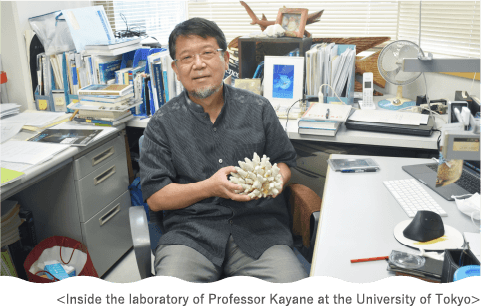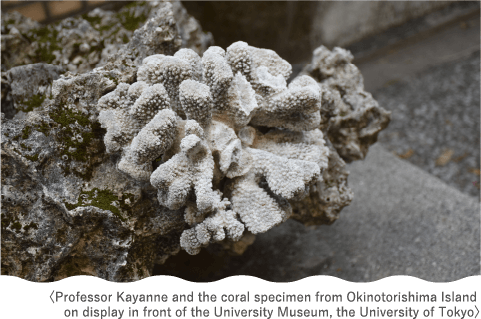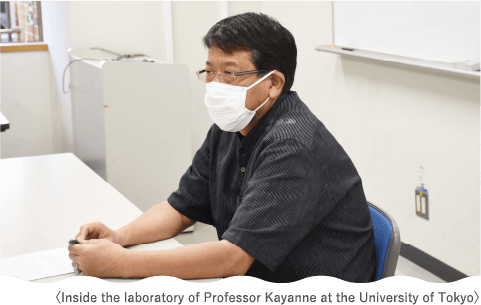
A.Okinotorishima Islands has a vast exclusive economic zone measuring some 400,000 km2, and is regarded as critical to national security. It's only natural to want to preserve the island if it means we get to study the living things and minerals within the zone and turn them into resources. But I don't think that's the only reason. There are numerous small atoll island countries that are at risk of submersion due to the rising sea level, just like Okinotorishima Islands. We should transfer the technology we've developed on this island to them, and cooperate with them to solve the issues we have in common. I think we need to protect Okinotorishima Islands from that standpoint.
A.Speaking at a UTokyo Ocean Alliance Okinotorishima and Small Island Countries Study Group meeting, Professor Kato from the University of Tokyo's School of Engineering has said there are huge amounts of untapped rare-earth and seabed resources. Besides that, Okinotorishima is Japan's southernmost tropical island and is located on the Philippine Sea Plate, so it's an extremely valuable island from a geological and ecological perspective, too. Of course, there are also many different important themes to research, like geological and topographic properties and biological processes.
A.There are so many things we don't know, so we still need to do a lot more research. When it comes to Okinotorishima Islands, there's plenty of talk about developing the mineral resources and exploiting the aquatic ones. Personally though, I think we should promote "soft" topics like environmental preservation and research more.
The US, UK, France, and other countries all around the world are progressively establishing large marine protected areas (MPAs) off their shores, including designating their economic exclusive zones as such. For instance, the UK has set up an MPA to protect the waters around the Chagos Archipelago. In other words, they're securing the resources and their rights to them by openly declaring that they're going to fulfill their duty to preserve the environment. Japan's main focus is on putting its islands to economic use, and it's still not doing enough about environmental preservation and research. I think what really matters is fundamental efforts and research to protect Okinotorishima Islands and its environment.
A.Research on Okinotorishima and Minami-Tori-shima Islands' environments and nature is still lacking and not widely known, so not many students are interested in studying them. In particular, Minami-Tori-shima also offers lots of themes to study in terms of land ecosystems, so that should also broaden the scope of research and make it more interesting.

A.That island is about 9 m above sea level at its highest point, but no one knows why coral debris has piled up so high. Even the biggest typhoons wouldn't be able to wash it ashore that much. The mechanism behind its formation is shrouded in mystery. There are many theories—like maybe a reef formed at high sea level then got eroded, or maybe there's another, much older reef at the island's core. Researching the geology and formation of islands and corals is my area, so it's highly intriguing.
A.Prewar studies show that more islets used to be visible at full tide than today, and it's not known why all of them except Kita-Kojima and Higashi-Kojima have disappeared. When we investigated the two islets before they were surrounded by seawalls, we found they were shaped like mushrooms. This suggests they probably have roots connecting them to the coral reef below. However, whatever the definition of an island under international law may be, Okinotorishima Islands as a whole refers to the eggplant-shaped coral reef measuring 4.5 km from east to west and 1.75 km from north to south.

A.Today, Okinotorishima Islands is at risk of submersion due to the rising sea level caused by global warming. The formation of coral reefs is essential to maintaining the island, and we need to make sure it gets preserved by harnessing the ecological engineering technologies we're working on. I also want to work toward applying the research on Okinotorishima Islands to small atoll island countries that are also facing submersion.